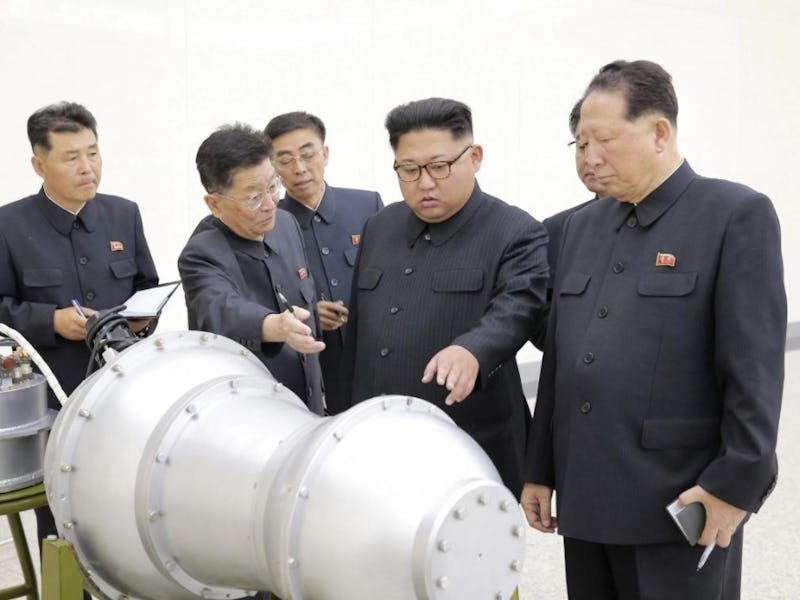North Korea Says it Detonated a Hydrogen Bomb: What We Actually Know
It was big.

On Sunday morning, North Korea announced that they had successfully detonated a hydrogen bomb. This followed photos released earlier in the weekend by North Korean state media of Kim Jong Un inspecting what looked to be a sizeable nuclear weapon.
While a weapon was indeed detonated, and its impact was massive — considerably more powerful than the last nuclear test conducted by North Korea — at time of writing, we still don’t know if it was in fact a true H-bomb like the country has claimed. Regardless, North Korean state media announced Sunday that the device is intended to be placed on an intercontinental ballistic missile. In July, North Korea tested an intercontinental ballistic missile that could in theory, given a different trajectory, reach Chicago or even New York.
So what exactly did North Korea accomplish on Sunday? And what even is a hydrogen bomb anyway? Here’s what we know.
- While atomic bombs employ a process called fission, hydrogen bombs are sort of a two-in-one punch: they derive their power from an atomic explosion that prompts hydrogen to compress to the point where fusion takes place. Their massive explosive energy is caused by a thermonuclear fusion reaction of hydrogen isotopes — and they’re much more powerful than atomic bombs. To learn more about the difference between atomic and hydrogen bombs, read this.
- Experts have not proven yet that North Korea did in fact detonate a hydrogen bomb, speculating that it could have perhaps been a “boosted” atomic bomb.
- Regardless, according to The Washington Post, South Korean officials and independent nuclear scientists estimated that the device tested on Sunday had a yield of 100 kilotons — making it almost seven times as strong as the nuclear bomb that was dropped on Hiroshima.
- Vipin Narang, an expert on nuclear proliferation and strategy at the Massachusetts Institute of Technology, told the Post that the power of this device could allow North Korea to forfeit a certain amount of missile accuracy and be able to wipe out a large area, calling it a “city buster.”
- The U.S. Geological Survey reported a 6.3-magnitude earthquake at the testing site at the time of the detonation. To learn more about earthquake ratings, read this.
- The State-run Korean Central News Agency said that all the components of the “H-bomb” were homemade, meaning the country is self sufficient in building more equivalent weapons.
- H-bomb or not, we still don’t know if North Korea can manage to fit a weapon of this calibre onto an ICMB. David Albright, a nuclear weapons expert and the president of the Institute for Science and International Security told the Post that he doubted that North Korea had made an equivalent weapon small enough at this point.
Although this was North Korea’s sixth nuclear test, it is the first since President Trump came to office. Throughout the year, the country has focused on amping up its ballistic missile testing.